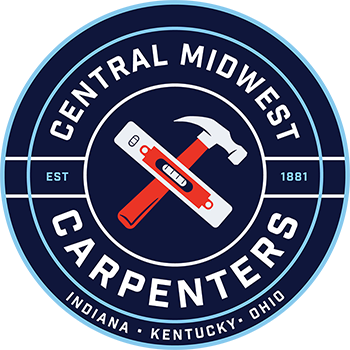Today: UBC Meets the Challenge
 Initially, many of unions were taken by surprise by the non-union sector’s developing economic clout. In the absence of a comprehensive counter-strategy, a number of locals and district councils adopted wage concessions in order to stay competitive with the non-union sector. Non-union employers effectively undercut that tactic by simply driving their own pay rates down further. At the same time, the ABC grew in political sophistication and became one of the linchpins of the “New Right” that propelled Ronald Reagan to the presidency in 1980.
Initially, many of unions were taken by surprise by the non-union sector’s developing economic clout. In the absence of a comprehensive counter-strategy, a number of locals and district councils adopted wage concessions in order to stay competitive with the non-union sector. Non-union employers effectively undercut that tactic by simply driving their own pay rates down further. At the same time, the ABC grew in political sophistication and became one of the linchpins of the “New Right” that propelled Ronald Reagan to the presidency in 1980.
“Our organization was set up to deal with the industry as it was in post-World War II North America,” said UBC General President Doug McCarron when he was elected in 1995. “But the industry has changed drastically since then, and we must change with it.”
Since his election, McCarron has reorganized the Brotherhood’s priorities and its structure. He set organizing as the union’s number one priority and has redirected its resources to get that job done. The union’s localized and often politically-motivated structure has also been restructured and streamlined to reflect today’s regional and national construction industry, as well as to ensure that union leaders are more accountable to members for the job they do.
The ultimate goal of these structural changes is to organize and reorganize every carpenter and contractor in North America and set the standard for wages, benefits, and working conditions on every jobsite. It is an ambitious goal, and one that will take a long-term effort to complete. But it can be done through organizing.
The UBC faces a complex and challenging future. New tools and materials and new methods of construction are entering the industry at an accelerated rate. In many ways, the carpenter of the 1990s is no different from the carpenter of the 1880s. But all indications are that the dawn of the 21st century will bring much more rapid technological innovation. Increasingly, the on-site carpenter is more an “installer” than a “fabricator” with the development of prefabricated materials, modular components, and panellized building sections. The multi-faceted general contractor is giving way to the construction manager whose subcontractors expect their carpenters to restrict their skills to more highly specialized tasks, such as concrete forms, framing, drywall, ceilings, finish work, etc. Union apprenticeship and journeyman-enhancement training programs have addressed these new developments while at the same time maintained a high level of all-around craft competence that union journeymen will always need.
Ultimately, maintaining and extending a strong union for carpenters will depend on combining an awareness of the dynamics of the future with the finest traditions of the past. The days of “country club” unionism that provided job security to members by keeping membership numbers down and the unorganized out are over. The UBC’s growth in the future rests on its ability to reach out and open its doors to all working carpenters.
Just as Peter J. McGuire built the Carpenters Union in the 19th century by organizing all carpenters, today’s leaders must rebuild this union in the 21st century in much the same way. They must embody that same spirit of inclusion in order to organize the unorganized and mobilize current union members to talk to their non-union brothers.
In 1882, W.F. Eberhardt of Philadelphia’s UBC Local 8 (which remains strong to this day), wrote a letter to the Carpenter. He outlined the efforts of his local’s members to contact every single carpenter in the city on a ward-by-ward basis. He described how those pioneering volunteer carpenter-organizers held regular meetings across the city to bring the unorganized carpenters into the new union. Today, more than 116 years later, the Brotherhood is using a “new” model much like the outlined by Eberhardt. Every district, council, and local in the union currently boasts an active volunteer organizing committee that uses today’s modern techniques and technologies, as well as old-fashioned one-on-one contact, to spread the still-relevant message of unionism to every non-union carpenter in their area. The American workforce may look different today–more multi-cultural, multi-racial, and multi-lingual. But the underlying principle of organizing all the men and women who make their living at the carpentry trade is exactly the same as it was in 1881, when 36 carpenters met in Chicago to improve their lives, their futures, and their trade.
Photo source: FreeImages.comGeorgeBosela


Leave a Reply
Want to join the discussion?Feel free to contribute!